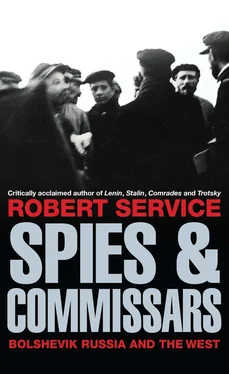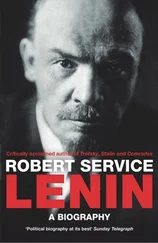The Bureau hit back by beginning court proceedings for the return of its papers — an option that would have been denied them under Bolshevik rule. 10Martens and Nuorteva had lived for years in the US, making considerable careers for themselves as émigrés. Martens had been vice-president of the Weinberg and Posner engineering company; Nuorteva had been a successful journalist and in 1907 had been elected to the Finnish Sejm. They knew the ways of the American establishment and had funds for suitable legal advice in pursuit of Soviet ends.
Martens and Nuorteva also made commercial approaches to big American firms and were in correspondence with Henry Ford, J. P. Morgan Jr and Frank A. Vanderlip. They promised ready finance, to the value of $200 million, if a deal could be quickly sealed. 11By spring 1919 the Information Bureau had produced its shopping list of Russia’s requirements, presumably on instructions from Moscow, stating that Sovnarkom wanted to enter the US market and purchase railway equipment, agricultural and factory machinery, mining and electrical equipment, cars and lorries, printing presses, tools, typewriters, textile goods, chemicals, shoes, clothing, medicines, canned meats and fats. The only large industrial item missing from their list was military supplies — this must have been thought too likely to provoke a response that would damage the chances of procuring the other items at a time when American troops remained on active service in northern Russia and Siberia. Martens and Nuorteva simultaneously dangled Russian natural and agricultural products before the eyes of American manufacturers. The Soviet authorities, they claimed, had grain, flax, hemp, timber, minerals, furs, hides and bristles for immediate sale. This was an implausible idea in a year of growing food shortages in Russia, and wheat and rye exports in particular would have been hard to organize in the face of peasant revolts. At any rate the Bureau publicized Soviet official willingness to deposit $200 million in gold in European and American banks to cover the initial deals. 12
Its determination was rewarded in September 1919 when a contract was drawn up with the Antaeus Export and Import Company which wanted to buy furs from Petrograd. Another deal was put together for Soviet Russia to import pork and corned beef via the National Storage Company. 13While the British and French governments continued to ban trade with the territory under Soviet rule, a small breach in the Allied economic barriers was achieved in America.
This phenomenon inevitably made the US authorities edgy about the spread of communist influence from Russia. With President Wilson ailing, Attorney General Alexander Mitchell Palmer sprang into action — had the President been in better health he might have asked him to be more cautious. On 8 November 1919 the Department of Justice arranged for two hundred ‘Russian Bolsheviki’ to be taken into custody and an official announcement was made: ‘This is the first big step to rid the country of these foreign trouble makers.’ 14All were alleged to belong to the Union of Russian Workers as irreconcilable subversives. Bomb-making materials were said to have been found as well as Red flags, revolvers, printing presses and banknotes ready for circulation. A further sequence of raids was organized in New York, Chicago, Pittsburgh, Philadelphia, Cleveland, Detroit and Buffalo. The Union of Russian Workers, which had been founded by Bill Shatov (though in 1917 he left to join the Bolsheviks in Petrograd), was among the organizations targeted. The most prominent detainees were the anarchist leaders Emma Goldman and Alexander Berkman, who were accused of having invalid immigration and naturalization papers — and it was emphasized that they were hostile to political elections and the market economy. 15
Palmer revelled in the publicity stirred up by his raids; it was widely believed that he had fixed his sights on standing for the Presidency in the near future. His officials indicated that a further search was under way to lay hands on five hundred leading ‘Red sympathizers’ across the country. 16On 1 December 1919 Charles Ruthenberg, secretary of the Communist Party of America, was arrested in Chicago. 17
Although a mass deportation of ‘Russian Reds’ was in the offing, Nuorteva and Martens were spared arrest — an omission which did not go without adverse comment. 18An editorial in the New York Times was headed ‘The Plot against America’:
The testimony of Ludwig Martens before the Lusk committee puts an end to his pretensions as an Ambassador from Soviet Russia. He is not even in the status of an unrecognized Ambassador. His errand here is not diplomatic in any sense. He is here as an enemy of the United States, as the agent of conspirators in Russia who are planning to bring about a bloody revolution in this country and destroy its Government by force. 19
Nuorteva spoke up for his comrade with the odd claim that Martens had no objection to being deported. Just as bizarrely, Nuorteva added: ‘But if he goes he will take a million residents in this country of Russian origin with him. The Soviet Russia Republic [ sic ] has eighty-seven vessels ready to bring them back as soon as the way is open. All they want is to be landed in some safe place where the Soviet Government is in control. Petrograd would suit us.’ 20The press campaign intensified as William C. Bullitt was reported as having had contact with Nuorteva and Martens. The newspapers, at least those not under socialist ownership, aimed to demonstrate that an international conspiracy was at work; and the fact that Bullitt had worked for the State Department and the White House gave a piquant menace to the media assault. 21
Martens claimed that the Soviet leaders generally limited themselves to ‘affirmative propaganda’; but when pressed, he admitted that the Bolsheviks had employed terror. The New York Times pointed out that Lenin and Trotsky believed in violent revolution everywhere. One of its editorials went further by levelling the charge that the October 1917 seizure of power was effected ‘largely by men from America who went to Russia’. 22With the exception of Trotsky and Bukharin, it was a fantastic exaggeration to assert that ex-residents of New York had supplied the vanguard of the October Revolution. But the newspaper did not feel the need to stick to provable facts. Wild claims were the norm.
Although Ruthenberg was soon released from prison, 249 communist and anarchist leaders who were held on Ellis Island were loaded on to an old transport ship, the Buford , and deported on 21 December 1919. The ship was popularly known as ‘The Red Ark’. Their ultimate destination was Soviet Russia and the entire group sang the Internationale before embarkation. They refused to be demoralized, believing that their punishment was yet another sign that the American capitalist class was starting to panic. They elected Berkman as their spokesman, who said that he expected to be greeted by old friends in Moscow. His wife Emma Goldman declared: ‘I do not consider it a punishment to be sent to Soviet Russia. On the contrary, I consider it an honor to be the first political agitator deported from the United States.’ With her flair for publicity she left nobody in doubt about her confidence: ‘Incidentally, I am coming back. The plan we have considered, which I am going to work on particularly, is the immediate organization in Soviet Russia of the Russian Friends of American Freedom. I insist that I am an American. This practice of deportation means the beginning of the end of the United States Government.’ 23
Further deportations followed as Palmer, abetted by a young J. Edgar Hoover in the Bureau of Investigation in the Department of Justice, broke up the early communist groupings, and the organization of support for Comintern became downright dangerous for militants even though they succeeded in producing political literature and holding public meetings, albeit on a smaller scale than before. Nobody could be sure that the authorities would not strengthen the measures against the Communist Party of America and the Communist Labor Party by means of lengthy terms of imprisonment for people who could not easily be deported. The communist Linn A. E. Gale fled to Mexico City and took his Journal of Revolutionary Communism with him. He recommended exile as a way of avoiding ‘the most savage and brutal penalties’ that he predicted would be applied by ‘the minions of capitalism’. 24But somehow the remaining militants reassembled their links and resumed activity; and the Central Executive Committee of the Communist Party of America, cajoled by Moscow, agreed in principle to unification with the Communist Labor Party in mid-March 1920. 25The number of members was in the tens of thousands and was geographically patchy — in 1920 the Communist Labor Party had only 4,525 members and most of these lived on the eastern side of the country. 26Discipline, moreover, was shaky. A furore occurred in the same year when Jay Lovestone, a leading young activist, appeared in court as a witness for his friends and forswore any adherence to Leninist principles to save them from a potentially heavy sentence. 27
Читать дальше












